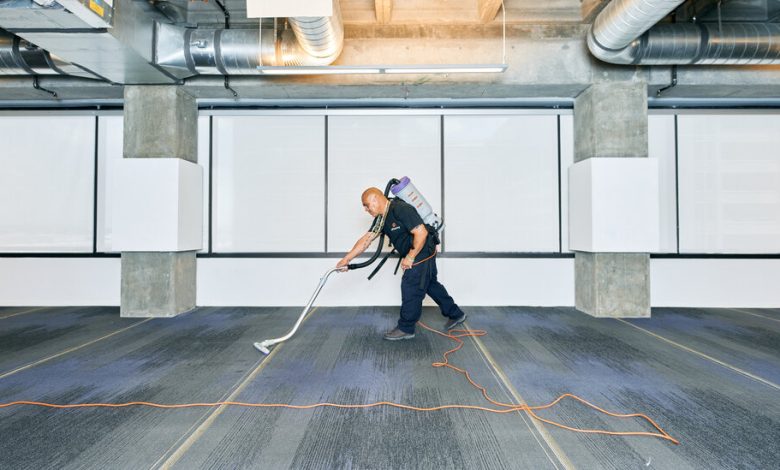Vaults, Ducts, Kitchens: Everything Must Go When a Company Moves Out

Wayne Horne’s job comes with many challenges. This time, the problem was a generator that was too large to fit through its existing vent.
Mr. Horne, the director of decommissioning at the real estate firm CBRE, was helping a client vacate a manufacturing plant in New Jersey. In addition to the furniture, fixtures and equipment, the tenant had installed a very large generator to back up its operations.
But the building has been sold and planned for conversion to residential housing. The new owner does not want the generator, which is encapsulated by four walls. Removal will be complicated.
“If it were sitting outside, its value would be around $250,000, but if we take it apart and sell it for scrap, then ‘poof’ that value just went away,” Mr. Horne said. His solution: take down a wall, remove the generator, then rebuild the wall at a cost of nearly $100,000.
Welcome to the world of decommissioning offices, the often expensive and time-consuming undertaking of cleaning out a space when a tenant decides to leave. The process has grown in importance as office vacancies continue to increase.
Office vacancy rates nationwide reached a record high of 16.4 percent in the three months that ended in June, exceeding the peak of 16.3 percent reached in the first quarter of 2010, during the financial crisis, according to the real estate firm Colliers. In addition, the amount of U.S. sublease space available rose in the second quarter of 2023 to 259 million square feet, an increase of five million square feet from the previous quarter.
Although increased vacancies may be the result of several factors, including the often-cited “flight to quality” in office space, the jump in remote work is “the key driver of falling office space usage,” said Nicholas Bloom, a Stanford professor who studies work-from-home trends. In a survey of office workers, Professor Bloom and other researchers found that 57 percent of respondents were working in an office or on-site full time at the end of August, and the rest were fully remote or had a hybrid arrangement.
“Our operating model now allows more people to work from home,” said Adam Plake, an associate vice president at DirecTV, who is working with CBRE to relinquish two of five office buildings in El Segundo, Calif. “Like other companies, we are constantly evaluating how we can tighten our belts and consolidate our space.”

DirecTV is decommissioning two buildings because many of its employees continue to work from home.Credit…Spencer Lowell for The New York Times
Leases typically delineate a tenant’s obligations when moving out. Traditionally, contract provisions are fairly basic. Before keys — whether electronic or physical — are returned to the landlord, furniture, fixtures and equipment must be cleared out, the space left “broom swept” or “broom clean,” and ultimately returned to the same state as first occupied.
But straightforward lease provisions do not tell the whole story. Large heating, ventilation and air-conditioning systems for old computer rooms must be dismantled. Abandoned vaults must be removed. And staircases, and even fully equipped kitchens, sometimes must go if commercial tenants hope to recover their security deposit.
The cost of removal can be substantial. Tenants can recoup at least some value, often by selling some fixtures in the secondary market, but the expense is often unanticipated. Rarely are those expenses factored into the lease at the outset.
Tenants “look at the costs going in, but underestimate or ignore the cost of removing equipment” when moving out, said Jay A. Neveloff, a partner at the law firm Kramer Levin in New York.
Leases of 10 years or more are common in commercial real estate, but any equipment installed a decade ago becomes “functionally obsolete,” said Jeff Eckert, a managing director at the real estate firm JLL, which also helps clients with decommissioning.
Commercial building owners, in particular, may focus on the ceiling’s ecosystem, he said. Cables and ductwork are most likely outdated; lighting has improved over the past decade to be more environmentally sound, and even ceiling tiles have been upgraded in terms of aesthetics and acoustics. Removing what were considered improvements a decade ago is necessary to create a “white box,” or shell, Mr. Eckert said, for prospective tenants to assess the space.
At DirecTV, for example, planning began more than a year before the company was set to vacate a Denver site because the lease provisions required the space to be returned as it was when originally leased. But the office included not only a call center and administrative offices, but also a data center that incorporated complicated cables and industrial cooling systems. Removing those would entail hiring engineers.
Sometimes tenants have installed staircases to connect floors. Even those may need to be removed, which sounds herculean, but if it doesn’t affect the structure of the space, it is a relatively simple process, Mr. Horne said.
And then there is the signage outside a building. Affixed signs can easily be removed, but when the facade is granite or another higher-end material, the process is more complicated. Stone, for example, must be repaired and then cleaned to match the unadorned surface.
When the tenant’s corporate name is carved into the building, the repair often involves replacement. Even then, “it won’t match exactly,” Mr. Horne said. “And those situations are the bane of my existence.”
As with fashion, office design changes over time. Few people want the large mahogany tables that were once a fixture in board rooms. Landlines are relics. Jewelers and banks may need to contend with the removal of large vaults.
Even kitchens have waned in popularity. Landlords now often require tenants to remove them, especially if the building owner plans to divide the footprint into smaller spaces. Bigger companies may retain them, but Mr. Horne predicts that “they’re a thing of the past.”
In general, decommissioning costs in a metropolitan area can exceed those in suburban or rural areas. But removal costs may be offset if the vacating tenant is able to sell some of the furniture or fixtures in the secondary market. Task chairs remain popular and can easily find a home with employees, nonprofit groups or in the resale market.
Disposing of furniture through recycling or donation can be as expensive as throwing it out in landfill, Mr. Horne said. Since CBRE began tracking the disposals done for clients last October, approximately 85 percent were diverted from landfill.
When costs are very high, “a tenant’s obligations to remove items are only as good as their security deposit or letter of credit” used when entering into the lease, Mr. Neveloff said. In other words, a tenant may be willing to walk away from the security deposit if the decommissioning costs are prohibitive. The issues are rarely resolved by lawsuit, he added, because litigation typically costs more than having the installation removed.
Tenants in bankruptcy often leave without fulfilling their obligations, resorting instead to “jingle mail,” a practice that, in the days before electronic entry, involved sending keys back to the landlord in an envelope, said Steven A. Carvell, a professor at the Cornell SC Johnson College of Business.
The decommissioning process does have some lighter moments. Mr. Horne, for example, needed to remove a British double-decker bus from an architect’s office in Scottsdale, Ariz. A wall was taken down and the bus towed out, but the prior owners found a buyer for the bus in Nashville. (Mr. Horne said the bus was stored in a warehouse in the Memphis area).
Will Powell, who owns a commercial interior design business in Nashville and sometimes works with clients to empty out offices, says strange items are often left behind. One of the most surprising was a full set of golf clubs. After searching unsuccessfully to find the person who left the clubs behind, he said, two crew members resorted to a time-honored approach to determine who would take them home. “They settled ownership with ‘rock-paper-scissors.’”





